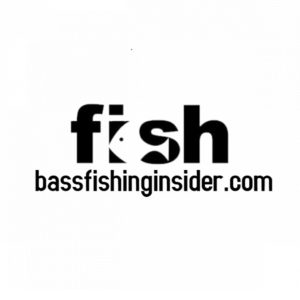
Offshore bass fishing has been around for a very, very long time, but it’s become a “thing” over the last few years with the proliferation of fishfinder technology and the increased availability of online mapping. As a result, fishermen have learned to capitalize more and more on the offshore bite, especially during certain seasons like summer and winter.
To fish offshore for bass, first research contour maps at home to find offshore structure where bass reside. Second, at the lake, use graphs to check for the presence of bass in likely hotspots before starting to fish. Third, fish the best areas with good offshore lures like crankbaits, jigs and drop shot rigs.
Why to Look Offshore for Bass (3 Reasons)
- Bass Head Offshore During the Summer and Winter Months.
.Fishing offshore can pay off in significant ways in certain bass fishing seasons. Summer is one of the best times to head out of shallow water and off to deeper water with structure as bass look for cooler water that holds more oxygen and baitfish. Winter can also be an excellent time to find bass offshore as they, once again, look to find more stable water environments.
- Fish Offshore to Get Away from Fishing and Boating Pressure
As boating and fishing pressure increases due to higher levels of activity on the water, bass look for places that they perceive to be safer. Fishermen are notorious for fishing in shallow water more frequently. We like to cast at targets, so shallow water is where most people fish.
Learning to get offshore and away from where most people bass fish is key to getting away from highly pressured fish and onto fish that haven’t seen as many fishing lure presentations, making them more willing to bite.
- Fish Offshore to FInd Schools of Bass Versus Isolated Shallow Bass
When bass fishing in shallow water, you’ll likely be fishing for bass tied to specific pieces of cover, which usually means an isolated bass here and there. Although they sometimes group up in shallow water to feed, it is not as common to find schools of bass up shallow.
Conversely, offshore bass fishing OFTEN involves schools of bass, meaning that once you find them, you’ll have the chance to catch multiple fish off of one spot. Again, big congregations of bass mean big opportunities to catch multiple fish.
I remember a time when I was fishing in a tournament with my Dad at the Butler Chain in Orlando. We went all day with only a few bites — all up shallow. The tournament day was ending when we decided to hit an offshore spot close to the weigh-in location. We loaded the boat with only a few minutes left and filled our limit on offshore bass. We found a huge school and caught them big to finish well in the tournament. Good times!
For another great read about the pros and cons of shallow and deep water fishing, check out Do Bass Like Shallow or Deep Water?
How to Catch Bass Offshore: 3 Critical Steps
Step 1: How to Find Bass Offshore. (Where Are Offshore Bass?)
The first step to catching bass offshore is finding them. Putting in the time at home to research and study contour maps is essential to your success. Learning to read a contour map is THE KEY to successfully finding and catching a ton of fish in deep water.
The key is understanding fish movement and patterns. After the spawn, fish will move along egress highways underwater. Look for thoroughfares from spawning grounds to deep water that make logical sense for fish to travel along. Creekbeds, old road beds, ridgelines, or humps from shallow water hangouts to deep water structures should be examined thoroughly.
When summer or winter is in full swing after the transition related to the spawn, it’s time to look for deep underwater structure. Check out spots like ledges, underwater points, and main lake humps to find fish mid-season (see below).
I like to use Navionics to locate and ide on my desktop to identify spots of interest. Incidentally, you can also use the Navionics app while on the water to cross-reference areas you’ve found at home. (Here’s an article on bass fishing apps) that can help you research at home or on the water.) Here’s a sampling of the types of structure you should be looking for on a contour map.
- Ledges
- Channel Bends
- Underwater points
- Underwater humps
- Breaklines- noticeable changes in the contour of the lake where deep water meets shallow
- Old roadbeds
- Creekbeds
- Underwater islands
Finding the GOLD!
Finding an underwater structure is a great first step, but finding the gold takes a couple of extra steps. Do this, and you’ll be on your way to hitting the bass jackpot.
Intersections are areas where two or more bass highways meet. Here are a couple of great examples of golden opportunities:
- A creekbed that meets up with an underwater roadbed.
- An underwater point that connects to a channel bend.
If you can identify and locate two different structures that are connected in some way, then you’ve likely hit the nail on the head.
Read on for more gold!
Once you’ve identified good structure on your maps at home, it’s time to head to the lake to move to the next step in the process.
Step 2: Use Your Electronics to Find Offshore Bass
After you’ve spent time at home marking a number of spots to check out, head to the lake to dig a little deeper. Once at the lake, it’s time to put the electronics to work. Spend time investigating each spot.
I find that using a “zig-zag” pattern works best to check the area for signs of fish on my graph while SIMULTANEOUSLY looking for any forms of underwater cover.
More GOLD!
The second golden nugget involves finding a good piece of structure combined with good COVER. Here are a few great examples of structure meets cover.
- Brush piles on underwater points.
- Stumps that line an underwater creekbed.
- An old sunken boat lying on top of an underwater hump.
Hopefully, you get the picture. It is a combination of different fish-attracting elements that make fishing spots unique.
If you find cover WITH structure, you should probably mark that as a fishable spot, EVEN IF you don’t see fish. Fish will often be so tight to underwater cover that you may not be able to see them with your graph, but they are very likely still there. It’s essential to spend time on these spots regardless of the evidence (or lack thereof) of fish.
I usually like to have 20-25 spots to check with varying forms of structure represented in those spots. I don’t want to only concentrate on one type of structure. I want a cross-sampling of many structures to determine which structure the fish seem to like best for that particular day.
If you’re ready to upgrade your electronics, Bass Pro has a wide variety of units. I run Humminbird units along with Garmin Livescope. If you can jump on one of their sales, you can score some pretty good deals. Check out their latest here.
Step 3: How to Fish Systematically for Offshore Bass

You’ve done your homework, located some offshore fish, and you’re ready to cast a line.
I always start with a moving bait for a couple of reasons. First, I like moving baits to cover water quickly, find the bass, and tell if the fish at a particular spot are ready to bite. Second, I like moving baits because they seem to fire up a school better than something slow.
I may eventually switch to a slower presentation for several reasons.
Slow baits are a great go-to option AFTER you’ve exhausted a moving bait bite. Often, bass will go through a cycle of eating and aggression directed toward your moving bait. However, inevitably, that bite slows down. Once the moving bite slows down, I switch to something much slower like a Texas Rig worm or even a finesse-style bait like a drop shot rig.
Sometimes, fish never fire on a moving bait at all. In this situation, I won’t necessarily abandon the spot. Instead, I’ll often switch to something like a drop shot and give that some time for a few minutes before moving on.
Finally, plan to fish through a ton of spots throughout the day. Don’t expect each area to hold fish all day long.
Instead, plan on fishing through the offshore spots on a rotation throughout your fishing day. The premise is relatively simple. Each spot only warrants approximately 10 minutes UNLESS you find that the fish are there and biting. Each of your marked fishing spots will likely turn on at different times of the day, so keep moving until they do.
6 Lures and Baits That Work Best for Offshore Bass
1. Crankbaits
Crankbaits are a great starting point for offshore structure. Pick one that runs just a little deeper than the deepest spot you plan to fish to ensure that it will dive deep enough to tick the bottom or nick the tops of any cover on the structure. Check out the Rapala DT Series, one of my favorite crankbaits for offshore bass fishing (available on Amazon).
2. Texas Rig Worm
You can’t go wrong by having a Texas Rig worm tied on. Studies have shown, and data prove, that Texas Rig worms are one of the most reliable ways to catch lunker bass.
3. Football Head Jig.
I love fishing these jigs in deep structure. When I’m brush pile fishing, I always have one tied on. Reaction Tackle makes an excellent football head jig that catches tons of fish (Amazon).
4. Flutter spoon
Flutter spoons are a great alternative to a soft plastic jig or traditional hard plastic bait. Jerk or reel it up and let it fall. As it falls, it flutters down, mimicking a dying bait fish.
5. Drop shot
Drop shot rigs with a soft plastic are, perhaps, the most effective finesse presentation available for fishing deepwater structures. Give this rig some time if you need to slow down and tempt finicky fish.
6. Shaky head
Shaky head worms are another finesse tactic that bass love. When fish are hunkered down and stubborn, this bait is a great “sedentary” and slow approach to get them looking . .. and biting. If you’re looking for some of the sharpest hooks on the market, check out Owner shaky head hooks available on Amazon.
Bass Line. The Final Word.
Offshore fishing for bass is a unique animal. The learning curve can be significant and the research demanding, but the payoff can be huge. Become a student of fishing offshore for bass, and you gain an entirely new perspective on bass fishing.
Time to break out your maps, mark some spots, and head to the lake.
The bite is on somewhere.
Go get ‘em!




